Case Studies
Adding colour to The Amazing Maurice
Directed by Toby Genkel, The Amazing Maurice is an animation movie based on the 2001 novel by Terry Pratchett. Featuring the voices of Hugh Laurie and Emilia Clarke, it tells the story of Maurice, a goofy streetwise cat, who has the perfect money-making scam. He finds a dumb-looking kid who plays a pipe and has his very own horde of rats, who are strangely literate.
The film was selected to screen at the Sundance Film Festival in January 2023 and was also longlisted for a BAFTA in the animated film category.
It was graded in London by colourist Adam Dolniak at Splice. It was his inaugural animation project – an experience quite different to the live action projects he’s used to working on.
Animation
“In live action projects, I try and get involved with the DoP or director from quite early on,” explains Dolniak. “The majority of 'the look' would be down to the art department, the DoP and me. I would have the option to take the images in a totally different direction in post. I normally have a lot more leeway in how far I can push and pull the images, in both technical and creative terms.”
“The log conversion alone allows for enormous amounts of creative choices, using Baselight’s colour management or LUTs, or sometimes a combination of both. The creative possibilities are endless.”
In the case of The Amazing Maurice, a team of talented designers had already spent years making careful colour decisions on very detailed elements, so there are no such conversions.
“Decisions had already been made and locked in on minute details such as the colour of a stone gravel path, the exact hue of some hanging salami or the correct glow of an alcoholic’s nose,” says Dolniak. “Essentially, I am not creating a look – my part in the process is to polish a very pretty diamond.”
Colour management
Dolniak was brought into the process at the beginning of 2020. The film was finished in 3D stereo so he had some initial meetings with the producer to iron out some delivery details with regards to the 3D aspects.
An important part of the process was to ensure the colour management was accurate and Dolniak turned to FilmLight to support this process – focusing specifically on how the highlights were being processed.
“The images were quite peaky with lots of speculars going out of range so it was important to get this correct,” says Dolniak. “We ended up opting for FilmLight T-log as the working colour space because it is more adequate for animation. Although in certain scenes for various reasons I switched that to P3-D65 (which was also my viewing colour space).”
The grade
The animation studio was located in Germany so apart from one short scene which they received early on, to check the 3D stereoscopic aspects, Dolniak had not seen any of the animation progress.
“The film had an incredibly tight turnaround,” says Dolniak. “It might be surprising to hear that the first time I saw it was on the first day of the grade! The EXR media arrived in the morning from Germany, I had a few hours to conform it in and by 1pm I was sitting with the two directors and a producer ready to grade.”
With the look already carefully set out by the designers and animators, Dolniak’s role was essentially more technical than creative – finessing skin tones, brightening faces, applying subtle tweaks to highlights and shadows and making sure colours were consistent across scenes. The scenes weren’t animated in the narrative order so occasionally a scene’s tone didn’t quite match others around it.
Each of the characters had specific looks and colour palettes, so Dolniak would need to tweak the images to ensure they were consistent throughout.
“We paid particular attention to Maurice’s orange fur,” recalls Dolniak. “It didn't always match from shot to shot and it was important to keep it consistent.”


“The white fur of the rats occasionally had an unwanted colour cast, as well,” adds Dolniak. “So I would isolate and make it a cleaner white.”




Adding to the narrative
Dolniak used colour to try to steer the narrative a little, using different tones to convey certain messages.
In the den, where Keith and Malicia get captured by the rat catchers, he leaned into green threatening tones.
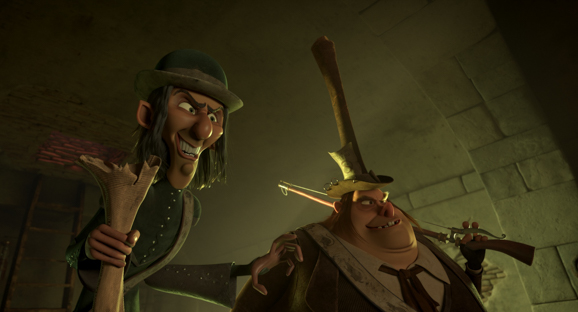
When the audience is first introduced to the rat king’s house, the images were initially too warm and saturated, so he toned that down and made it more neutral.
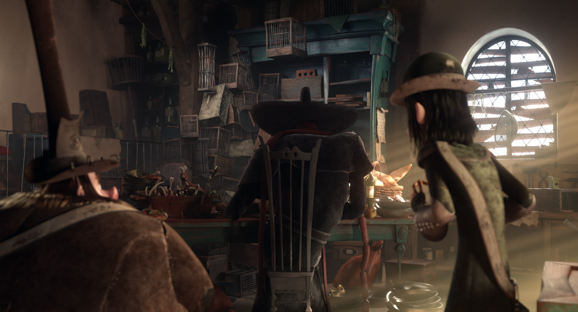
“My favourite scene in the film is the forest scene,” says Dolniak. “It's a great example of where the absence of colour creates a striking look. Here, we focused a lot on the darkest parts of the image, making sure we retrieved just the right amount of detail.”

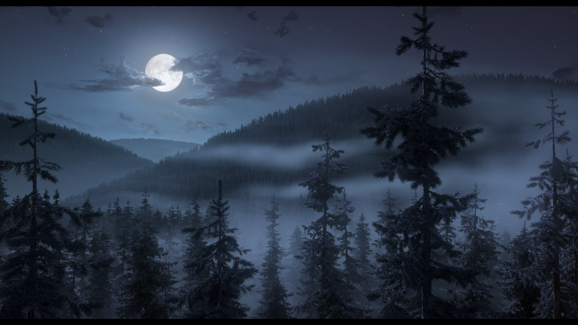



Challenges
Dolniak had ten days to grade the movie, plus time for all renders and deliveries. As all the secondaries were completed manually, without mattes, Dolniak relied extensively on shapes and keys to lift faces, eyes and adjust fur, etc.
“The trickiest scene was the final showdown,” explains Dolniak. “It happens over a long period of time – from night through to sunrise and then finishing in bright sunshine. Such scenes are generally dominated by one overall tone so it's easy to spot discrepancies.”
A lot of the mini scenes within this were all animated at different times and the end scene was actually one of the first to be animated – meaning a lot of it was disjointed in tone.
“It took multiple watch throughs and minute adjustments to make sure there was a smooth progression in the sun rise. We spent almost one day just on that scene,” recalls Dolniak.


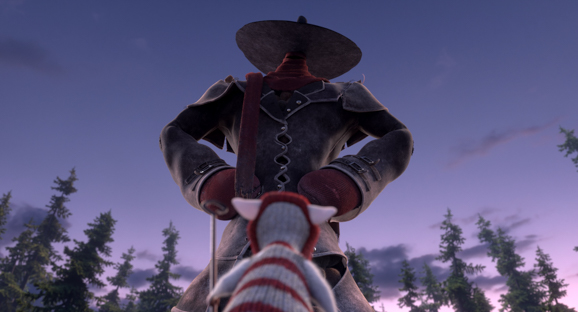


Baselight
The Splice team are constantly adapting and improving their workflows, and Baselight is at the heart of those pipelines. Dolniak has been grading on Baselight since 2011 and finds the system aids his role as a colourist in many ways.
“The software and hardware work so harmoniously together,” he says. “The tracking and keying are brilliant. I do a lot of sky replacements and have created a template stack that I can apply from job to job. On a simple moving shot I can track, key and replace the sky in about a minute. Baselight’s simple layering makes it possible.”
For The Amazing Maurice, Dolniak utilised many features such as the DKey isolation and tracking tools as well as stereo mode.
“In the absence of additional mattes, I couldn't have done this grade without the Dkey isolation and tracking features in Baselight,” explains Dolniak. “The speed and accuracy of Dkey surprises me every time I use it. Just when you think it won’t be able to differentiate and isolate a messy area, it delivers exceptional precision.
“And in stereo mode, the way Baselight manages the left and right eyes is very user friendly. It allows you to combine both tracks on the timeline to work in a single-stack mode. This means any grade is applied to both tracks by default, so there is no need to sync grades between stacks. It's a very streamlined way of working.”

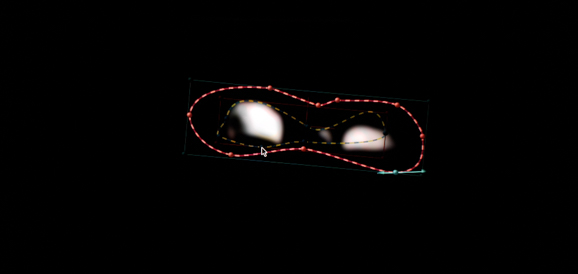


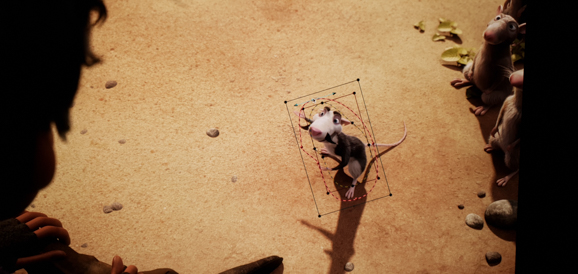



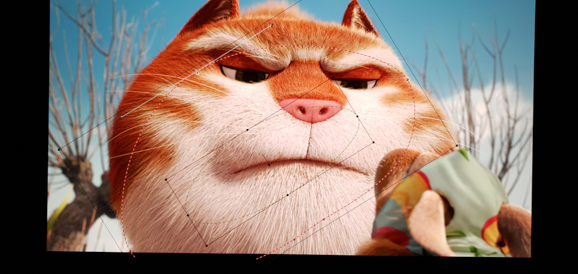



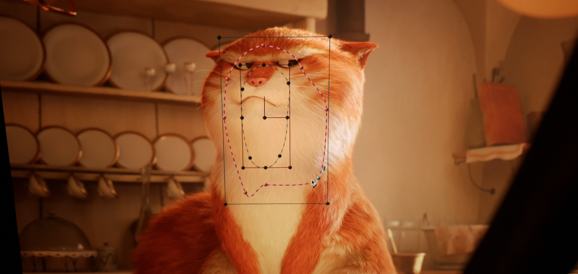

Image copyright: Cantilever Media & Ulysses Films
“The speed and accuracy of Dkey surprises me every time I use it. Just when you think it won’t be able to differentiate and isolate a messy area, it delivers exceptional precision.”

Adam Dolniak
Image copyright for The Amazing Maurice: Cantilever Media & Ulysses Films








